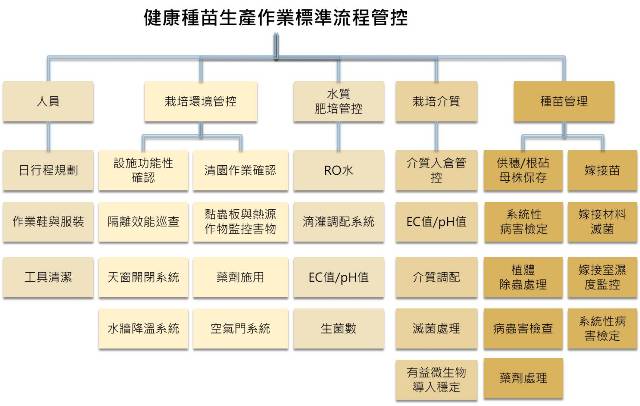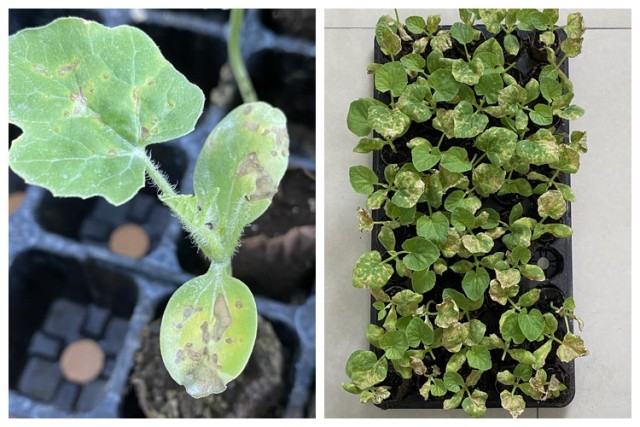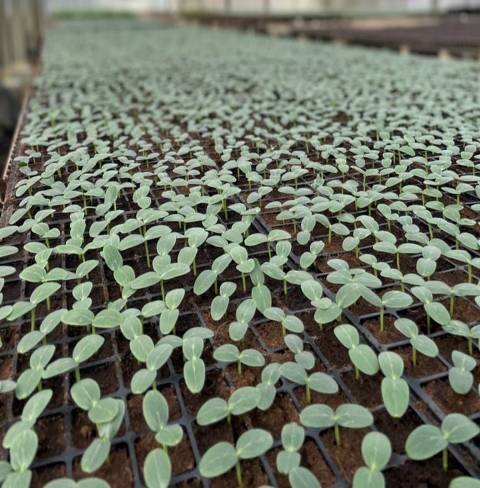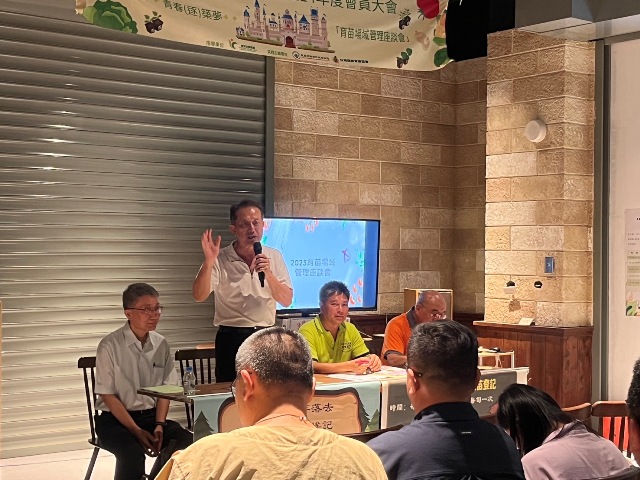 Home > News Home > News |
Welcoming Summer: Vigilance against Seedling Diseases in Cucurbit Crops – Integrated Management for Precision Control
The supply of high-quality seedlings has become an essential component in the production chain of cucurbit vegetable crops. In recent years, Taiwan Seed Improvement and Propagation Station, Ministry of Agriculture (TSIPS, MOA) has actively promoted the concept of seedling nursery certification. TSIPS has been assisting nurseries in evaluating five key elements—seed source, environment, personnel, growth media, and water—to identify site-specific needs, establish critical control points, and develop standardized production protocols, aiming to enhance the quality and efficiency of the vegetable seedling industry.
According to TSIPS statement, domestic cucurbit crop production has shifted to relay production. Nurseries supply uniform, vigorous seedlings, which facilitate subsequent nutrient management and pest control in the field. However, the high-density cultivation in nursery environments, combined with high-temperature and humid conditions beginning in summer, creates a favorable environment for pathogens. This increases the risk of seedling diseases, leading to plant losses, higher disease management costs, and compromised seedling quality.
TSIPS highlights that common diseases in cucurbits seedling stage include damping-off, Phytophthora blight, and bacterial fruit blotch. These diseases are highly prevalent under high-temperature and high-humidity conditions. Damping-off and Phytophthora blight infections often cause necrosis of stem bases and root tissues, leading to seedling collapse. Bacterial leaf spot causes necrotic, water-soaked lesions on cotyledons and leaves, and infected seedlings may become the primary inoculum source in the field, increasing the risk of subsequent infection during later growth stages. Currently, many nurseries rely heavily on chemical fungicides for disease control. However, complete eradication of pathogens in intensive nursery condition is challenging. Overuse of chemicals can also lead to the development of resistant strains, complicating future management efforts.
To support nursery industry advancement, TSIPS advocates the adoption of pathogen-free production systems and the Integrated Pest Management (IPM) approach. By examining the five key components of seedling production, nurseries are encouraged to conduct self-assessment, identify major control points, and reduce dependence on chemicals. In the future, long-term collaboration with plant doctors is also recommended to implement a specialized and systematic approach, ultimately supporting the production of robust, disease-free cucurbit seedlings.
 ▲Figure 1. Examining the five key components of seedling production—seed quality, environmental hygiene, personnel practices, growth media safety, and water sanitation. |
 ▲Figure 2. Cucurbit seedlings were harmed by bacterial fruit blotch, causing losses to nurseries. |
|
 ▲Figure 3. Healthy and high-quality seedlings of cucurbit crops. |
 ▲Figure 4. TSIPS cooperates with Taiwan vegetable seedling association to promote the concept of seedling nursery certification. |
| Contact Person |
TSIPS Su, Shih-Min |
TSIPS Liu, Ming-Chung |
|---|---|---|
| Office Tel. | 886-4-25825432 | 886-4-25825402 |
| E-mail: | armin@tss.gov.tw | tzong@tss.gov.tw |
